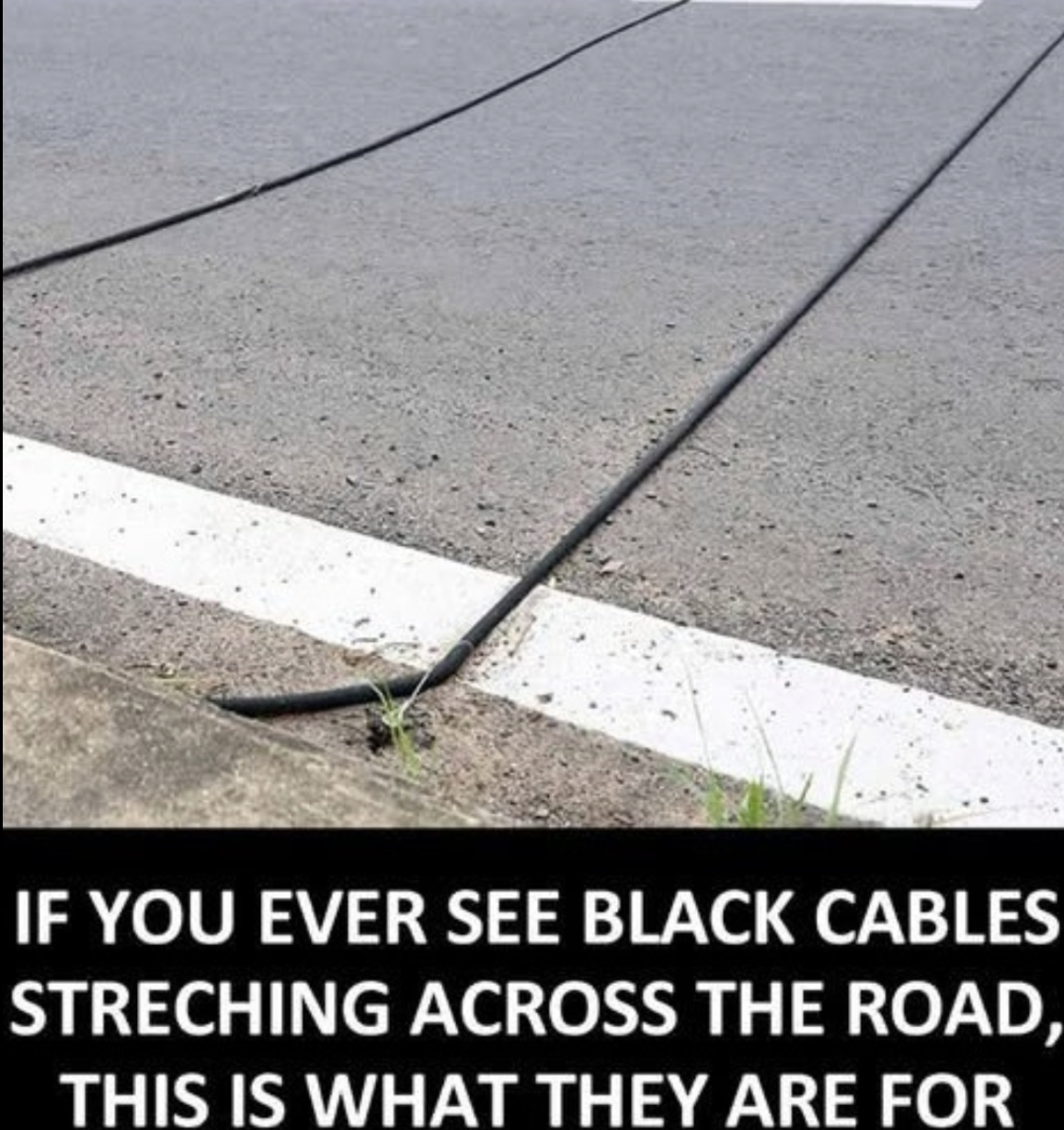Here’s the magic:
The tube is laid across the road and connected to a small, weatherproof counter box at the side.
When a car’s tire hits the tube, it compresses the air inside, sending a puff of air down the line.
That puff hits a sensor in the box — click — and registers one axle.
Yes, it’s that simple.
But from that one click, engineers can learn a lot.
📊 What the Data Tells Us
One tube
Number of vehicles passing (traffic volume)
Two tubes, spaced apart
Speed, direction, and vehicle classification
Multiple setups over days/weeks
Peak traffic times, congestion patterns, pedestrian safety risks
For example:
If a car hits the first tube, then the second a second later, they can calculate its speed.
The time between axle hits tells them if it’s a car, truck, or motorcycle.
Repeating this over days helps cities decide:
Where to add stop signs or crosswalks
When to adjust traffic light timing
Whether a road needs widening or a bike lane
These tubes are the unsung data collectors of urban planning.
🧭 Why This Matters to You
That new left-turn lane?
The school zone with flashing lights?
The reason your street feels safer now?
It probably started with a black tube on the road.
Cities don’t make traffic decisions based on guesses.
They use real data — and these tubes are one of the most reliable, low-cost tools to get it.
So the next time you see them…
Don’t swerve.
Don’t worry.
Just drive over them normally.
You’re not interrupting anything.
You’re helping.
🚗 What You Should Do When You See Them
✅ Do:
Drive over them normally — your tires are part of the count
Avoid sudden swerving — they’re low-profile and safe
Report damaged tubes — if they’re torn or blocking traffic, call local public works
❌ Don’t:
Pop them with sharp objects (yes, people do)
Remove them — they’re part of official traffic studies
Assume they’re a hazard — they’re designed to be driven over
🌐 Where You’ll See Them
These tubes pop up:
Near intersections (measuring turn patterns)
In residential neighborhoods (studying speeding)
By school zones (assessing safety)
On rural roads (tracking seasonal traffic)
They’re usually in place for 24–72 hours, then removed.
🧠 Final Thoughts: Sometimes the Most Important Things Are the Ones You Barely Notice
We think of smart cities as full of cameras, sensors, and AI.
But some of the most important data comes from low-tech tools — like a rubber tube and a puff of air.
Those black cables on the road?
They’re not trash.
They’re not a mistake.
They’re the eyes of the city — quietly counting, measuring, and helping make your commute safer, smoother, and smarter.
So next time you hear that thunk-thunk under your wheels…
Don’t roll your eyes.
Give a silent nod.
Because you just helped build a better road.
And once you know what they’re for?
You’ll never drive over them the same way again.
